June 1, 2025 | 21:17 GMT +7
June 1, 2025 | 21:17 GMT +7
Hotline: 0913.378.918
June 1, 2025 | 21:17 GMT +7
Hotline: 0913.378.918
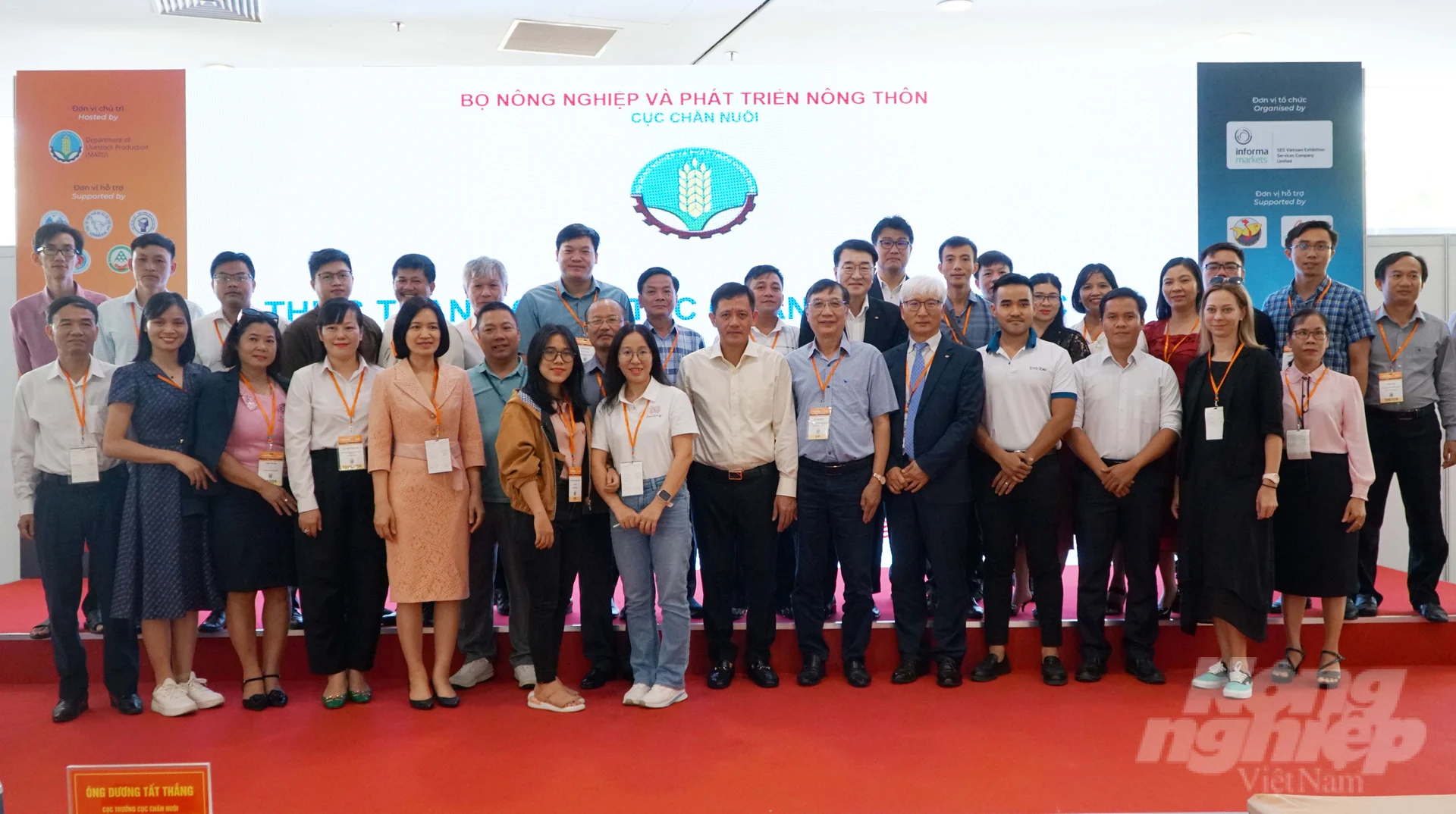
The conference on reducing greenhouse emissions in livestock production attracts many experts, managers and businesses nationwide. Photo: Le Binh.
These are the main contents of the Conference on Livestock technology and waste treatment, aiming to reduce greenhouse emissions, organized by the Department of Livestock (MARD) on October 12 morning. The program is held at the Vietstock 2023 International Exhibition, attracting many managers, FDI enterprises and livestock facility owners.
Vietnam used to have an undeveloped agricultural system, food shortage and overcrowded land. However, we are now known around the world for our production capacity. Accordingly, the total pig herd is 29.1 million (ranked 5th in the world in terms of total herd and 6th in meat output), waterfowl ranks 2nd in the world with 103 million heads, and industrial food output reached 21.5 million tons, ranked first in Southeast Asia.
According to Mr. Duong Tat Thang, Director of the Department of Livestock, with a production capacity and growth rate of 4-5%, the livestock industry always plays a vital role in maintaining the growth rate of the agricultural sector, ensuring social security.
“In 2022, the production value of the livestock industry reached 23.7 billion USD, accounting for nearly 27% of agricultural production value and 5.8% of national GDP. In particular, livestock farming has created livelihoods for more than 10 million workers in rural areas, provided food for about 100 million people and exported to other countries,” Mr. Duong Tat Thang informs.
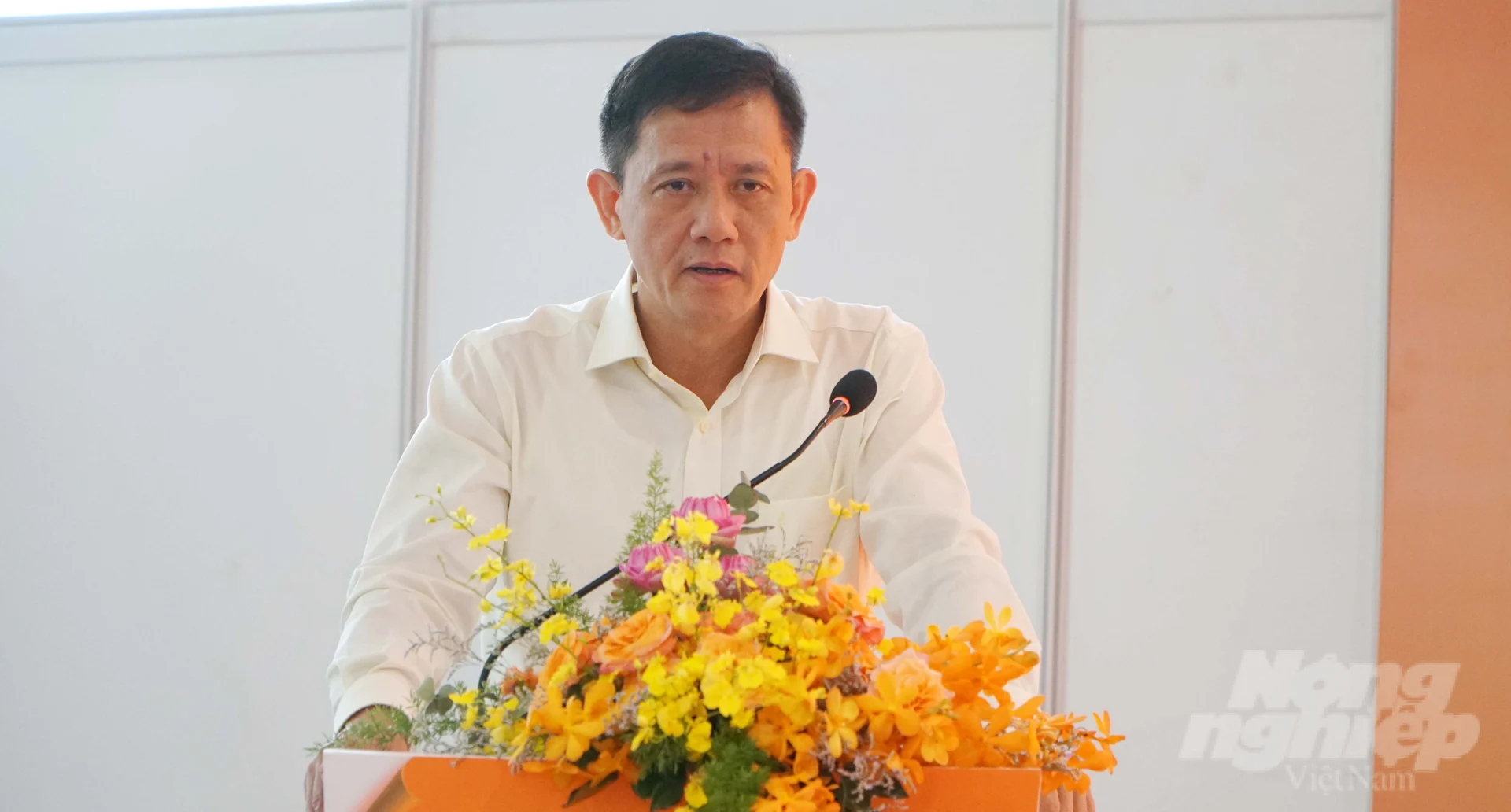
Mr. Duong Tat Thang, Director of the Department of Livestock Production. Photo: Le Binh.
However, as exciting as it is, the livestock industry faces countless challenges, especially ensuring environmental protection. There is still a lot of small-scale livestock raising in farm households and a lack of planning, causing increasingly serious environmental pollution. Each year, livestock production emits 18.5 million tons of CO2 but livestock waste treatment is still ineffective.
In 2022, Vietnam has nearly 9 million buffaloes and cows, 25 million pigs, and 557 million poultry. The estimated amount of livestock waste is 60 million tons and 302 million tons of liquid waste. Of these, pig farming accounts for 84% of liquid waste.
At the 26th United Nations Climate Change Conference (COP26), Vietnam committed to Net Zero by 2050.
“Specifically, by 2025, total methane emissions shall not exceed 96.4 million tons and methane emissions in livestock shall not exceed 16.8 million tons. By 2030, total methane emissions will not exceed 77.9 million tons, and methane emissions in livestock production will not exceed 15.2 million tons,” reports Ms. Nguyen Thi Hoa, Head of the Department of Environment and Animal Technology, Department of Livestock.
Many localities have been determined to reduce emissions into the environment. Livestock production associated with environmental protection not only helps develop sustainable herds, but is also a way for livestock products to go further, meeting export criteria.
According to Ms. Hoa, this is also a “test” for businesses and livestock facilities to develop strongly or find alternative directions.
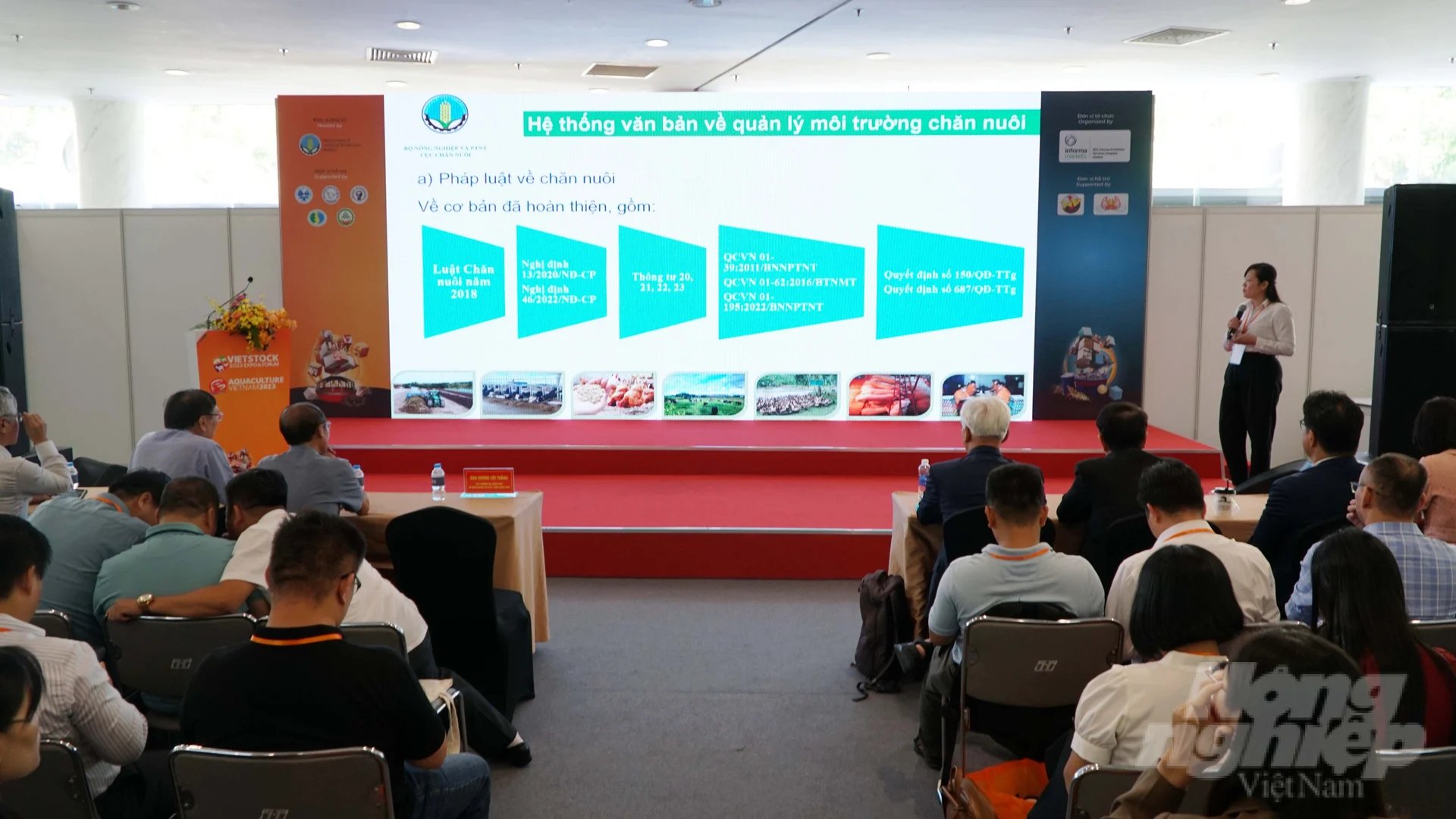
Ms. Nguyen Thi Hoa, Head of the Department of Environment and Livestock Technology, Department of Livestock, reports on the current status and orientation of environmental management and livestock technology until 2030. Photo: Le Binh.
According to the Director of the Department of Livestock, besides breeds and animal feed, modern technology and environmental protection are two topics of particular concern to the Vietnamese Government.
Companies and livestock farm owners are currently applying livestock waste treatments such as biogas, bio-matting, composting, and microbiological technology. Each technology has its own advantages, suitable for each condition and status quo of the livestock facility. This also helps Vietnam to realize its commitment as stated in COP26.
For raising large livestock and poultry, using biological bedding made from highly inert materials (such as rice husks, sawdust, straw, straw...) is the most effective method, helping to reduce methane emissions and environmental protection. Bedding can be mixed with probiotics to decompose feces and urine and reduce toxic gasses and odors in the barn.
Manure post-biological bedding is considered a fertilizer for plants that do not pollute the environment, ensures clean products, increases crop productivity, and improves soil quality, aiming toward a zero-waste, circular economy model.
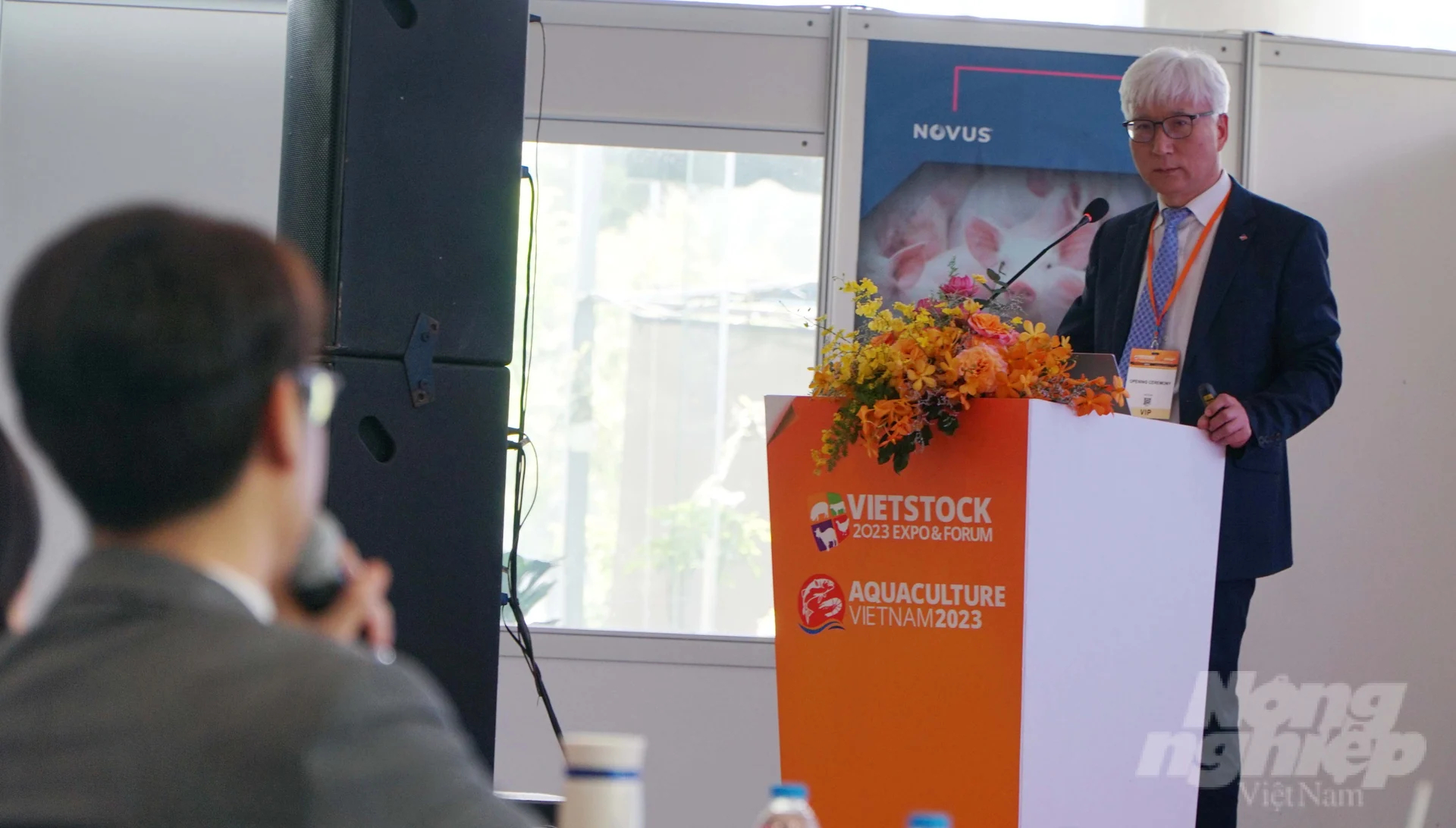
Dr. Jae Cheol Kim, Director of Technical Solution Center, CJ Vina Agri Vietnam Group. Photo: Le Binh.
In the report “Low-protein Diet,” Dr. Jae Cheol Kim, Director of the Technical Solution Center, CJ Vina Agri Vietnam Group, says high protein feed will cause poultry to use more water. This means more wastewater is discharged. Therefore, formulating diets with low crude protein combined with essential amino acid supplementation is a promising method to improve poultry production performance.
According to Dr. Kim, Korea’s Ministry of Agriculture, Food and Rural Affairs predicts that a 1% reduction in crude protein in animal feed can reduce about 360,000 tons of Nitrogen Oxide (N2O) during the decay of animal manure. Additionally, ammonia emissions are expected to be reduced by up to 10%.
“This brings economic profits to farmers as well as reduces increasing environmental pollution. Reducing protein-rich food also helps animals improve intestinal health and increase digestion,” Dr. Jae Cheol Kim analyzes.
This is not a new recommendation in countries around the world. In fact, low-protein diets in livestock farming have become mandatory in some countries such as Korea, China and the European Union.
According to Mr. Phan Trong Vinh, General Director of Nhat Viet Smart Future Joint Stock Company, in small livestock farms, odors and diseases are the problems the company often receives the most requests for help. It not only affects sustainable livestock farming but also affects the surrounding environment. Currently, the unit also accompanies livestock households nationwide to apply livestock waste treatment technology to reduce greenhouse gas emissions in Vietnam.
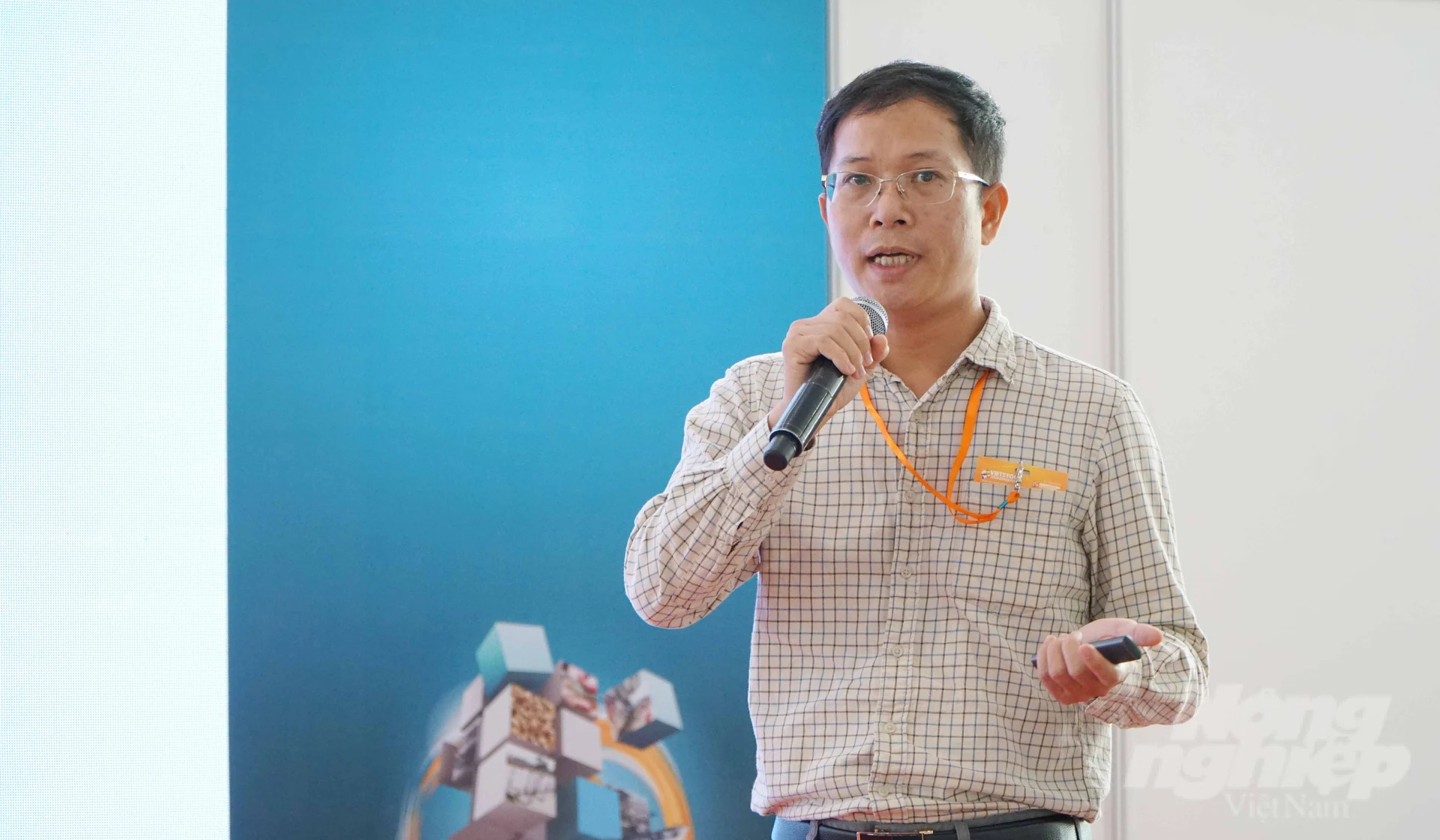
Mr. Phan Trong Vinh, General Director of Nhat Viet Smart Future Joint Stock Company. Photo: Le Binh.
“If the living environment is clean, without bad odors, livestock will also grow better, without disease risks. We focus on controlling waste issues from the input and initial living environment for livestock. This also helps farming use less antibiotics as well as water, eliminating more feces and wastewater into the environment,” Mr. Phan Trong Vinh presents.
According to a report from the Department of Animal Health, Vietnam has more than 73 million tons of manure discharged from livestock herds each year. Most of this waste is not fully utilized or is wasted, causing the risk of environmental pollution if there are no appropriate treatment measures. One of the effective measures implemented quite effectively by companies and farms is to use black soldier fly larvae that grow well on biologically treated manure.
In particular, the growth rate of larvae is relatively of good quality. After ten days of treatment, chicken manure completely loses its characteristic odor and reduces the risk of environmental pollution. This is a direction that farmers or FDI enterprises can think about and use in their journey to reduce emissions.
Director of the Department of Livestock Production, Mr. Duong Tat Thang also highly appreciated the Vietstock Exhibition. This is where managers and investors meet and open up business prospects.
Therefore, barn technologies, waste treatment, animal feed, and more are introduced widely. Farmers also have glances on modern barn technologies from countries around the world.
In terms of management, according to Mr. Thang, Vietstock is also an opportunity for policy advisors to listen, review and suggest to all levels to suit the production status quo better.
Translated by Quynh Chi

(VAN) Several scientists and farmers are experimenting with soil treatment in some key durian-growing regions such as Cai Lay (Tien Giang), Dak Song, Gia Nghia, and Dak R’lap (Dak Nong).
/2025/05/25/4127-3-073637_820.jpg)
(VAN) Thanks to the promotion from an FAO-implemented project, vegetable production in greenhouses in Moc Chau has seen strong development, from 1.5 hectares in 2021 to nearly 50 hectares in 2024.

(VAN) FAO has recently supported USD 140,000 to implement the project 'Risk mitigation human-animal interface risks through disease control initiatives in pig farming.'

(VAN) The People's Committee of Tra Vinh province has approved an adjustment to the investment policy for the Green Hydrogen Plant project, increasing its area to approximately 52.76 hectares.
![Reducing emissions from rice fields: [2] Farmers’ commitment to the soil](https://t.ex-cdn.com/nongnghiepmoitruong.vn/608w/files/news/2025/05/05/dsc08881jpg-nongnghiep-140632.jpg)
(VAN) Clean rice cultivation model in Thuong Tan commune, Bac Tan Uyen district, is assisting local residents in achieving sustainable agriculture by substantially reducing costs, increasing productivity, and protecting the environment.

(VAN) At the conference to disseminate Resolution No. 68, AgriS introduced its digital agricultural ecosystem and reaffirmed its commitment to accompanying the Government in promoting private sector development and sustainable agriculture.

(VAN) 'Blue Ocean - Blue Foods' initiative is designed to restore marine ecosystems and establish sustainable livelihoods for local communities by cultivating a minimum of 1,000 hectares of cottonii seaweed in the first three years.